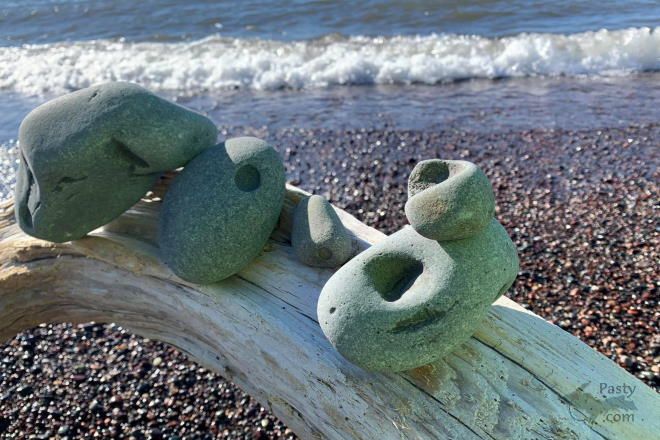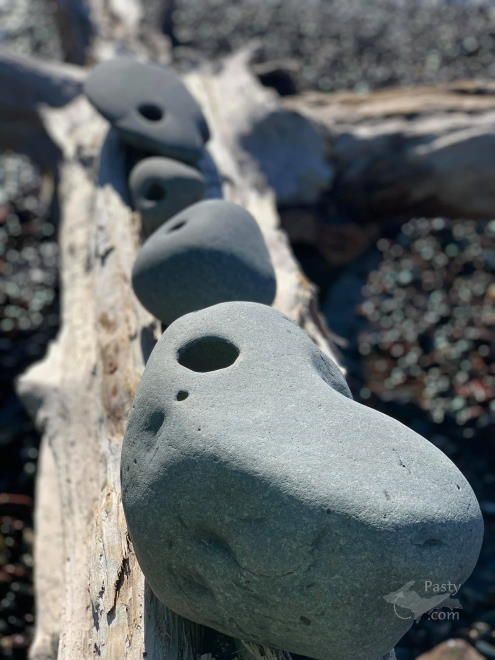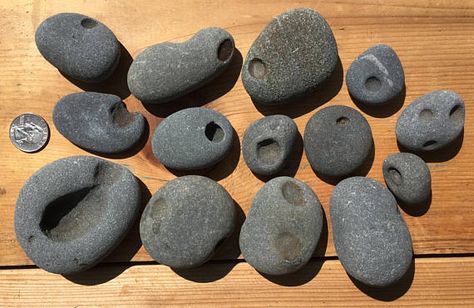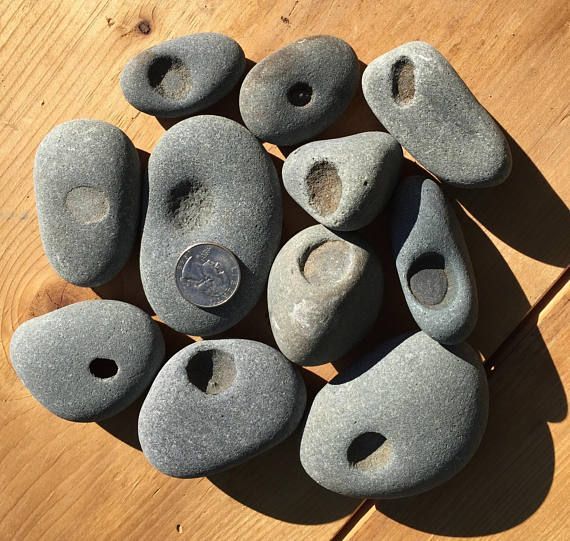The Search For Omar
by Jim Hird, (Da Wvyooper), Member Kanawha Rock and Gem Club, Charleston, West Virginia

Who is Omar and just how and where do I find him? That was my question when I read one of the latest postings from Pasty.Com (https://www.pasty.com/cam/index.html ). I make a habit of checking this site daily for their posts about all things in the Upper Peninsula of Michigan. For those that may have been following the series of articles I have done recently about the “Grunt” you know that I am a Yooper at heart even though I am now a West Virginia Yooper. Well today I found a post about “Omar” or more correctly about “Omarolluk”. My curiosity was piqued and here is what I found.
It turns out I have seen Omar before on my beach walks in the UP and had never really thought much about who he was. I am sure that I have him in my collection of weird beach rocks somewhere but for the sake of not having to tear the house down to find him I will just use the picture taken by Beth Jukuri in the Pasty.com post (1&2) with my thanks for saving me a whole lot of searching. Also several pictures off the internet from my searches as well (3&4).

In fact I am sure that you have seen him around at some point in your travels along streambeds and gravel piles even in West Virginia and Ohio. We are after all in an area that was visited by the glaciers that pushed south from Canada into the U.S. and left behind bunches of rounded rocks when they left.
Now for a more scientific explanation of Omar. Omarolluk, or Omar as he is more commonly referred to, comes from only one place on earth. Omar comes to us from the Omarolluk Formation on the Belcher Islands in the southeast part of Hudson Bay, Canada. He was carried by the glaciers for more than 700 miles to be spread across central Canada and northern U.S.
An Ontario Geological Survey noted, “It may not be the prettiest of rocks. But this gray rock (wacke) with brownish circles (calcareous concretions) has traveled a long way”. These odd looking rocks seem to be a favorite of rockhounds because of the unusual holes and appearance. They even have a Facebook page “Omar Omarolluk Collectors.” Who knew? Rocks with their own FB page?
Omars are dark siliceous “greywacke sandstone” and easily identified because of their distinctive round holes. The holes are left when the softer calcareous (containing calcite) concretions are eroded out by water or other weathering action. I suppose I should pause now for some more science concerning Greywacke or Graywacke. Either of these spellings are correct according to Wikipedia. Also according to them, the term comes from the (German grauwacke,signifying a grey, earthy rock) a variety of sandstone generally characterized by its hardness, dark color, and poorly sorted angular grains of quartz, feldspar, and small rock fragments or lithic fragments set in a compact, clay-fine matrix. It is a texturally immature sedimentary generally found in Paleozoic strata. The larger grains can be sand-to gravel-sized, and matrix materials generally constitute more than 15% of the rock by volume.
Right? Well what does all this science stuff mean? In more general terms the pieces of rock grains are broken, not worn or rounded by weathering means, and mixed with finer grained clays and silts. All this was done a very long time ago as far back as the Cambrian Period, some 485 to 540 million years ago. Greywacke is found worldwide but only Omar is from Canada.

Omar’s formation was a big mystery till something called “turbidity currents” and “turbidities” were better understood by geologists. Most normal sedimentary rocks are laid down according to the laws of gravity and the fine materials are not normally mixed with the larger particles. So sandstone is mostly sand, shale is made from fine mud like particles, and conglomerates are formed from gravel like particles. Our friend Omar is the exception and like I said he was a mystery.
Geologists now attribute his formation to submarine avalanches or strong ocean currents. These actions churn sediment and cause mixed-sediment slurries, in which the resulting deposits may exhibit a variety of sedimentary features. This theory is supported by the fact that deposits of Greywacke are found to have formed on the edges of the continental shelves, at the bottoms of oceanic trenches, and the bases of mountain formation areas. They also occur in association with black shales of deep sea origin.
Now that we know who Omar is and what he is made of let’s address the question of how he got his name. Omar was first reported by Robert Bell of the Geological Survey of Canada back in 1879 when he wrote about the abundance of dark grey quartzite (greywacke) in the country between James Bay and Lake Superior and Huron. “Well-rounded fragments of this rock…characterized by round spots, from the size of a pea to that of a cricket ball or larger, of a lighter color than the rest of the rock, which weather out into pits of the same form,” wrote Bell. Omar is a valuable tool for scientists, because they know where he came from and can use his travels to document the movements of glaciers.

Omar’s name is generally attributed to the Inuit hunter-guide and companion “Omarolluk” of R. J. Flaherty, a famous film maker of documentaries in 1922, who did geological surveys of the Belcher Islands. For a more complicated explanation of the name and how it may have originally been pronounced check out the “Etymology” of his name in the Inuit language on Wikipedia under Omarolluk.
So if you are wandering around your local gravel pit or lake shore in the central northern part of the U.S. or southern Canada and come upon this grey rock with odd round holes in it, say “HELLO” to Omar and invite him to your home to join your rock collection.
